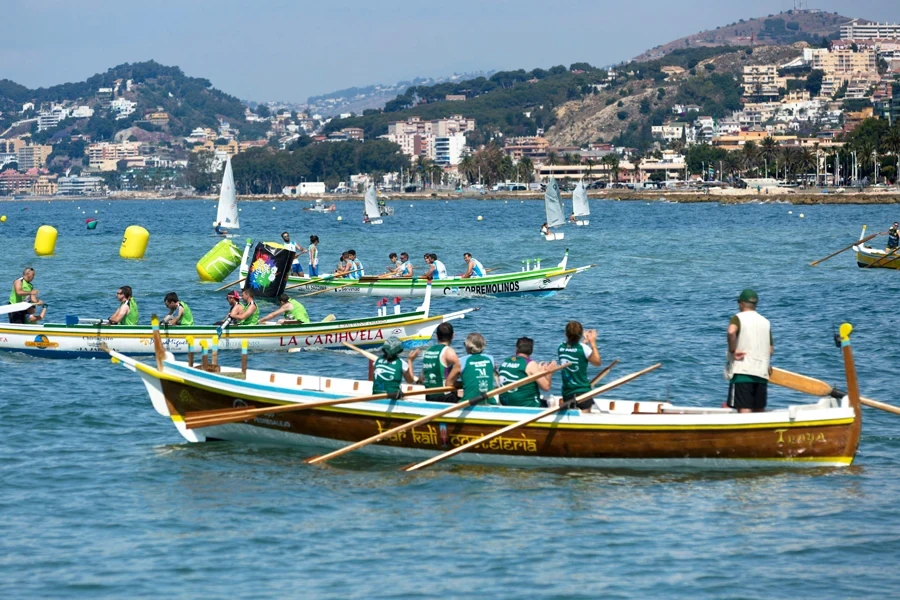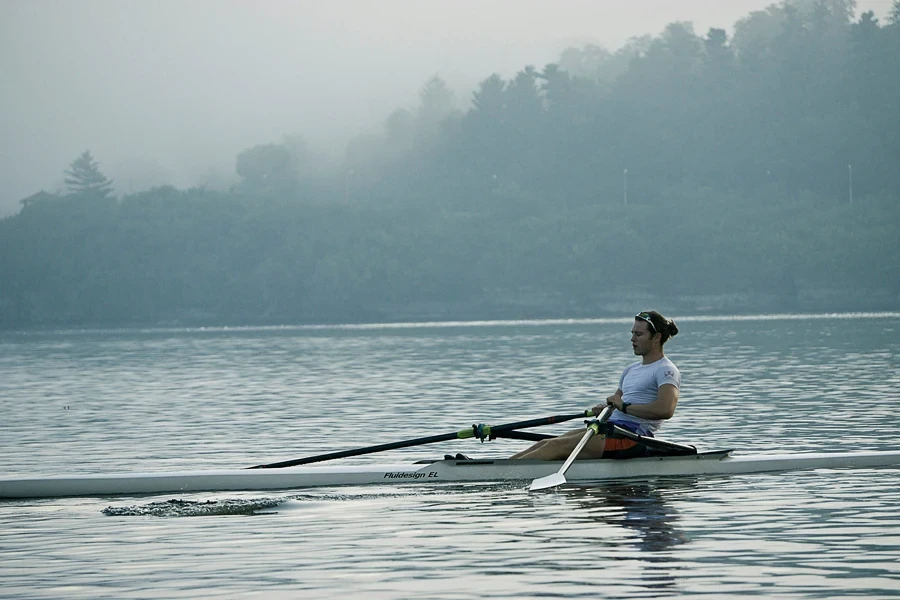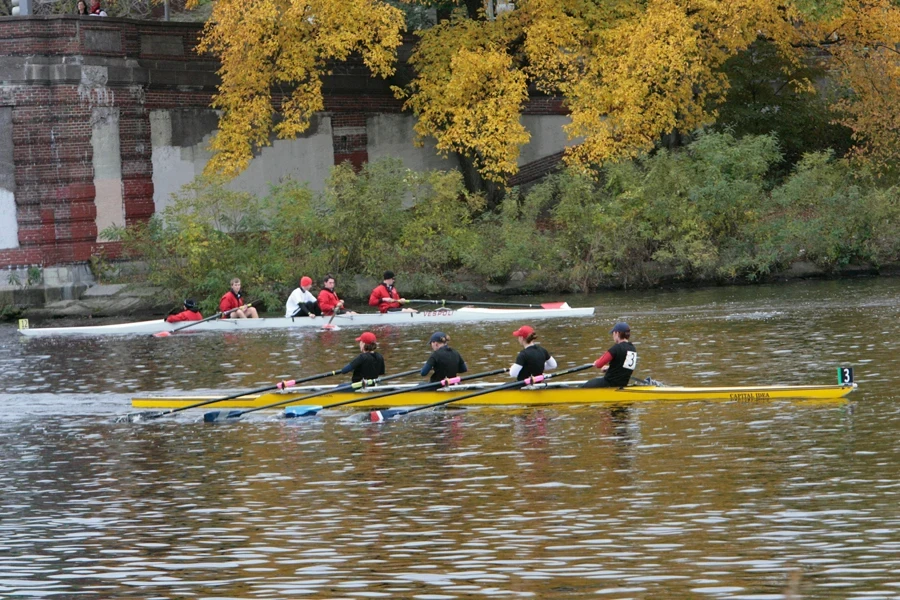Table of Contents
● Introduction
● Market overview
● Key technology and design innovations
● Top-selling models driving market trends
● Conclusion
Introduction
The market for leisure rowboats is growing rapidly due to the increasing emphasis on health and the surging interest in water activities. This trend stems from understanding how rowboating contributes to heart health and overall well-being, resonating with a growing number of people and driving up demand for such boats. Recent innovations in boat design and materials have enhanced the user experience, making rowboats more attractive and accessible to a wider audience. These advancements have created durable boats that are easy to manage and deliver improved performance—appealing particularly to fitness and outdoor enthusiasts. With an increasing number of people turning to activities that enhance fitness and well-being, the demand for recreational rowing boats is expected to increase, establishing them as a top choice for those leading an active lifestyle.
Market overview

The worldwide market for rowing boats is expected to achieve a value of $15.90 billion by 2031 compared to $10.83 billion in 2024, with a compound annual growth rate of 5.6%, as reported by Coherent Market Insights. This progress is fueled by the growing emphasis on health and the increasing appeal of water sports among those who enjoy fitness and outdoor activities.
As of 2024, North America is at the forefront of the market, with a share of 45.8%. The United States market is especially robust thanks to its rich heritage in recreational rowing and its support from numerous local companies that focus on crafting top-notch boats by hand. The abundance of lakes and rivers alongside a boating community further strengthens this market. Moreover, the exportation of rowboats to Europe has played a crucial role in boosting sales for manufacturers in North America. As per the findings by Coherent Market Insights, this regional leadership is predicted to persist because of the existing market attributes.
Key design and material innovations

The market for leisure rowboats is changing as new designs and materials are introduced with improvements in functionality and durability. Manufacturers are incorporating materials such as carbon fibers and advanced composites to create boats that are easier to maneuver and more effective in the water. Comfort and performance have been enhanced through designs tailored for beginners and seasoned rowers. The industry embraces sustainability by using friendly materials and production methods to address ecological issues. Technology, like GPS tracking and performance monitoring systems, is also being integrated to offer real-time data that improves training efficiency. These advancements push the industry ahead by enhancing user satisfaction and reducing effects.
Lightweight materials
Manufacturers are now opting for robust materials like carbon fiber and advanced composites to build recreational rowing boats more efficiently and effectively in water bodies such as lakes or rivers nowadays! Using carbon fiber aids in cutting down the overall weight of the ships while boosting their agility and speed – qualities that are key for rowers participating in competitions or simply enjoying a leisurely row on the water. As the Coherent Market Insights report highlights, findings on market trends show a push towards incorporating these modern materials into boat construction methods.
Ergonomic designs
Rowing boats nowadays are made with an eye for ergonomic elements that aim to boost comfort and performance levels for users of all skill levels – from novices to seasoned rowers alike! These thoughtful designs ensure that the boats operate at peak efficiency while keeping fatigue at bay for the rowers by offering features like footrests, cushioned seats, and streamlined hull shapes to make rowing a more pleasant and less taxing experience. According to a study by MarkWide Research, these ergonomic enhancements are broadening the appeal of rowing as a sport and making it an enjoyable endeavor for an increasingly diverse audience!

Sustainability
Consumer interest in friendly boating options has pushed manufacturers to embrace sustainable materials and production methods more readily. Businesses now incorporate recycled materials and nontoxic coatings to craft rowing boats that align with standards. Moreover, adopting energy sources such as solar panels for supplemental power is gaining popularity. This move towards sustainability tackles environmental issues and appeals to eco-conscious customers, as highlighted in Sea magazine.
Technology integration
Modern rowing boats are now equipped with cutting-edge technologies like GPS tracking systems and smart sensors to deliver real-time data and boost training effectiveness for rowers. By utilizing these technological advancements, rowers can monitor their speed, stroke rate, and various performance metrics to gain insights that enhance technique and stamina. Boats.com emphasizes the increasing prevalence of these features that have become indispensable for dedicated rowers aiming to maximize their performance. Smart technology also improves safety by incorporating distress signals and accurate navigation assistance.
The recreational rowing boat market is transforming thanks to using materials and ergonomic designs alongside sustainable practices and advanced technologies. The enhancements in performance and comfort make rowing more enjoyable while being kinder to the environment.
Top sellers driving market trends

The market for rowboats is influenced by well-known companies in North America and Asia Pacific, as well as top global labels. American firms in places like Maine and Massachusetts blend classic artisanship with modern concepts to create top-notch boats. Chinese and Australian producers are making headway in Asia by offering cutting-edge models. Popular brands such as NorseBoat and Echo Rowboat set up manufacturing plants locally in growing regions to satisfy growing needs and take advantage of regional preferences. The strategic innovations and expansions of these companies play a role in shaping the lively environment of the recreational rowing boat market.
North American manufacturers
In the United States of North America, companies like those in Maine and Massachusetts specifically assert their dominance in the market. Renowned for their exceptional craftsmanship and creative boat designs that result in sturdy rowboats being crafted with care and precision. One notable example is Cottrell Boatbuilding, located in Maine, known for its handmade wooden rowboats tailored to individual preferences, along with luxury yacht tenders and dinghies using a blend of traditional methods intertwined with contemporary techniques to ensure the production of durable yet lightweight boats suitable for a diverse range of rowers who seek quality craftsmanship and performance in their vessels. At Gig Harbor Boat Works, Washington State produces sturdy and low-maintenance fiberglass rowboats that cater to customers seeking dependable and aesthetically pleasing choices.
Asia Pacific leaders
The market share in the Asia Pacific region is growing quickly thanks to companies in China and Australia producing innovative rowboats tailored for the expanding middle-class population interested in outdoor leisure pursuits. In particular, Chinese manufacturers emphasize production to meet domestic needs and expand into international markets, while Australian producers capitalize on the thriving tourism sector. The appeal of outdoor river trips and row clubs resultantly drives up the demand for recreational rowboats. These manufacturers stand out in the market due to their innovative designs and the incorporation of lightweight materials, giving them a competitive edge.

Global brands
Many known global companies strategically establish local manufacturing facilities in rapidly growing areas to meet the rising demand and take advantage of local market trends. NorseBoat and Echo Rowing are prime examples of brands expanding their operations to serve various markets. NorseBoat is renowned for its versatile rowing and sailing boats that blend classic design elements with cutting-edge features that are appealing to casual rowers and competitive athletes. Meanwhile, Echo Rowings focuses on crafting sturdy open water rowing shells capable of withstanding different rowing conditions, ensuring reliability and longevity. They can create custom products that cater to the tastes and market needs in various regions by setting up manufacturing facilities locally.
Conclusion
The market for rowboats is expanding rapidly due to a growing focus on health and fitness, the introduction of new designs, and the ever-increasing interest in water activities. Manufacturers are constantly developing varied products tailored to fitness enthusiasts and outdoor lovers. This movement is strengthened by expanding manufacturing facilities in regions experiencing growth, allowing global brands to take advantage of local market trends and consumer preferences. With the increasing presence of technology advancements and sustainability efforts in this sector, consumers and businesses have plenty of opportunities. The future appears bright as the market for rowing boats is ready to cater to the changing demands of an expanding worldwide community.




